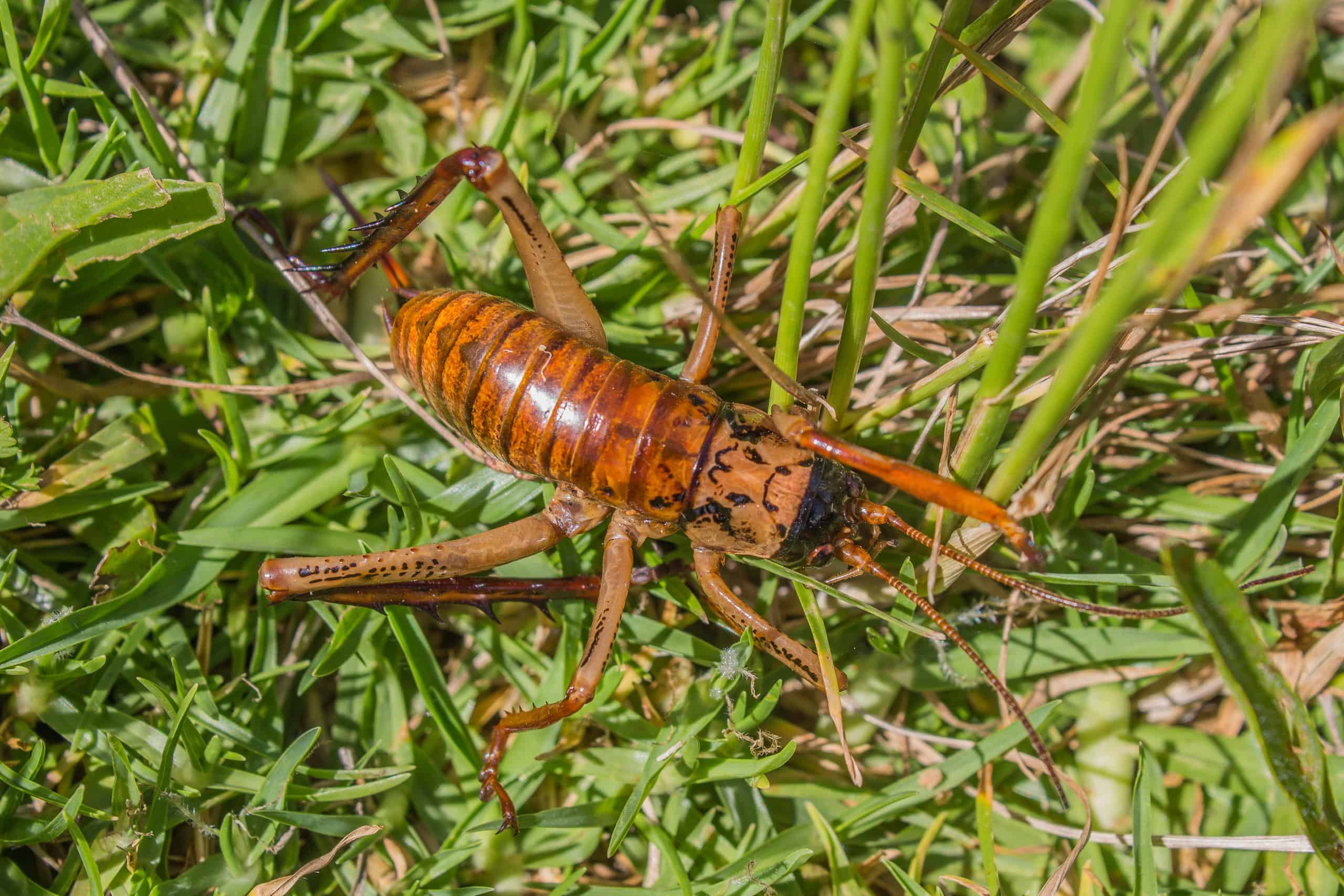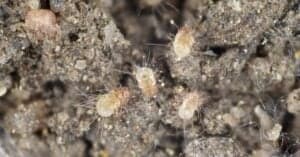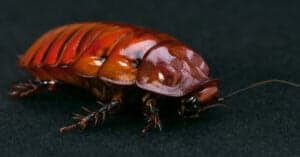Weta’s look like something out of science fiction, but these massive critters are quite real. Weta is a name borrowed from a Maori term that refers to a class of giant, flightless crickets that live in New Zealand. Like many of the native fauna of this country, these creatures are so strange as to appear to be unreal.
There are many different species of Weta, and some are quite rare. Others are encountered quite commonly in the suburbs and urban places of the country. Despite which species of Weta you might encounter, these creatures offer a look into a fascinating branch of insect evolution.
If you’re passionate about giant crickets, or just think that you might be, take a look at some of the fascinating facts surrounding these massive insects.
1. They are Among The World’s Heaviest Insects
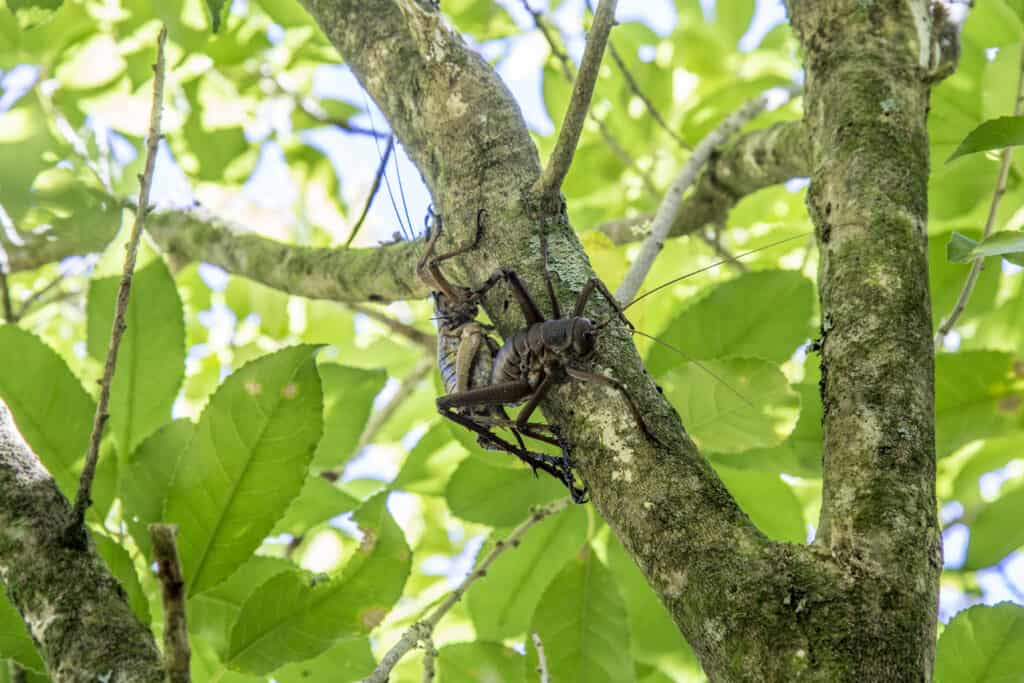
A Giant Weta on the trunk of a tree.
©Nava Fedaeff/Shutterstock.com
Some of the subspecies of Weta are among the heaviest and largest insects in the world. The largest subspecies of Weta is the Little Barrier Island Weta, which can reach massive lengths and weights.
Not all of the subspecies of Weta are this large, but most are much larger than your average insect. Being this size has its ups and downs, as Weta are not particularly aggressive. In addition, their massive girth makes them easy targets for predators such as birds and rats.
2. They Live Nomadic Lifestyles
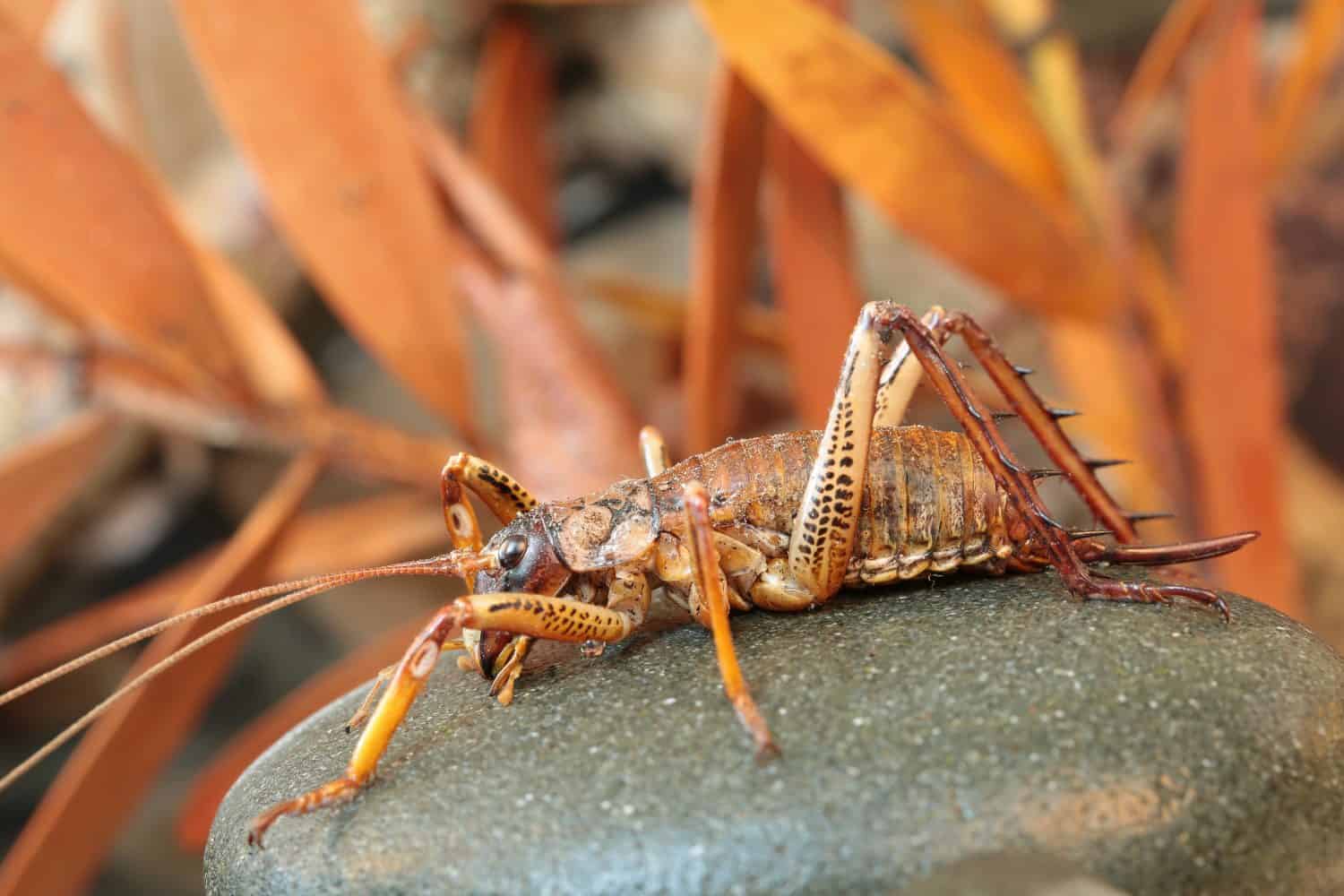
Weta are quite mobile, rarely sticking to one territory for long.
©Kim Howell/Shutterstock.com
Once a Weta reaches adulthood, these insects are naturally predisposed to roam and travel about. This makes them a natural fit for their mother country. This is partially because New Zealand has a famously lenient attitude towards those inclined towards itinerant lifestyles.
Weta are primarily nocturnal, so your chance of seeing one becomes much stronger in the night. They are quite adaptable and are found up and down both islands of New Zealand in a variety of habitats.
3. They Can Produce Sound With Their Bodies
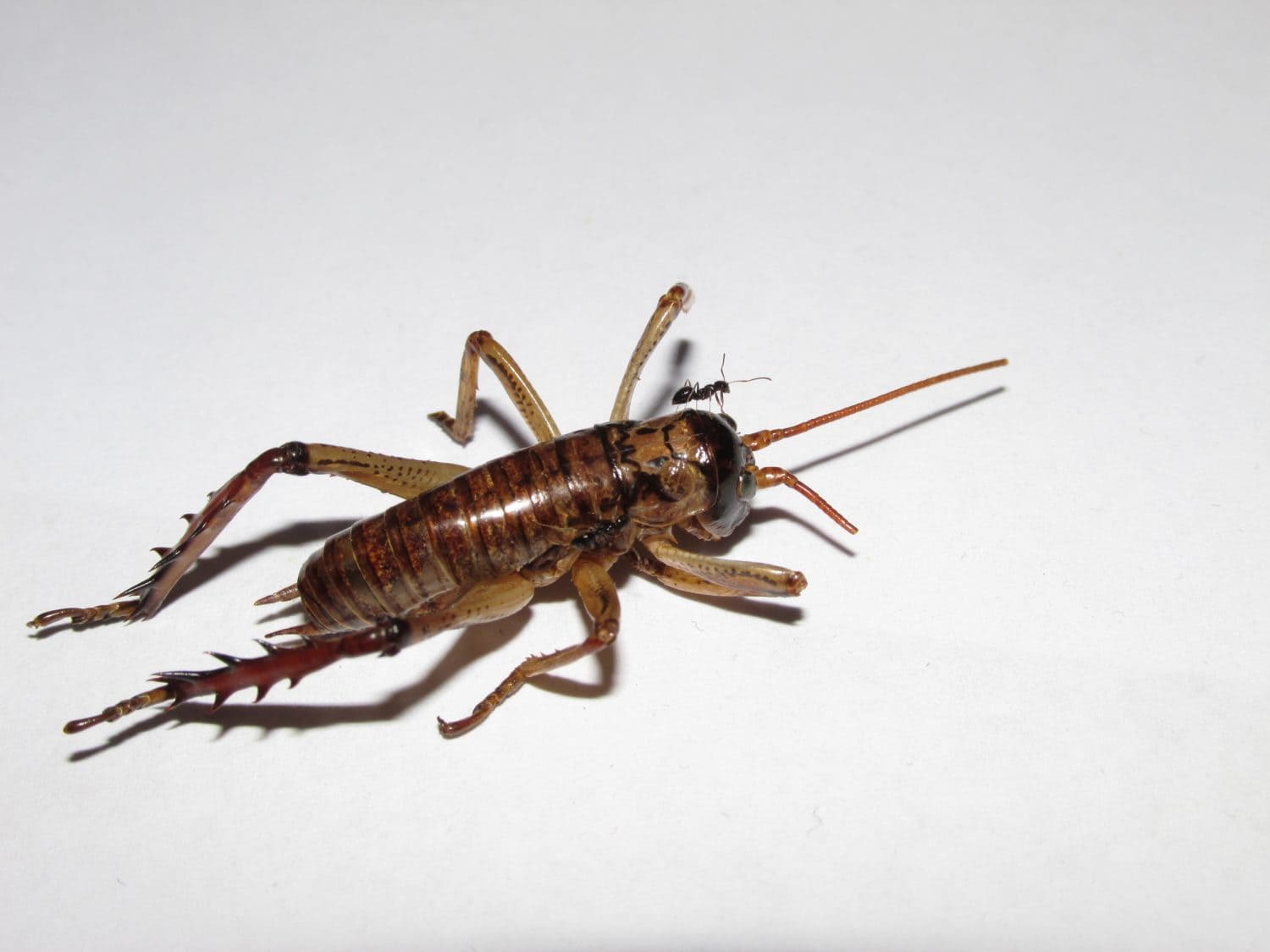
Like crickets, Weta are able to produce sound using elements of their physiology.
©Angela Stanfield/Shutterstock.com
Some species of Weta are able to produce very high-pitched sounds through various cavities in their bodies. This process is very similar to the sounds that crickets produce. Due to the differences in size between a Weta and a cricket, the former is able to produce a much wider variety of sounds.
4. They Are an Example of Island Gigantism
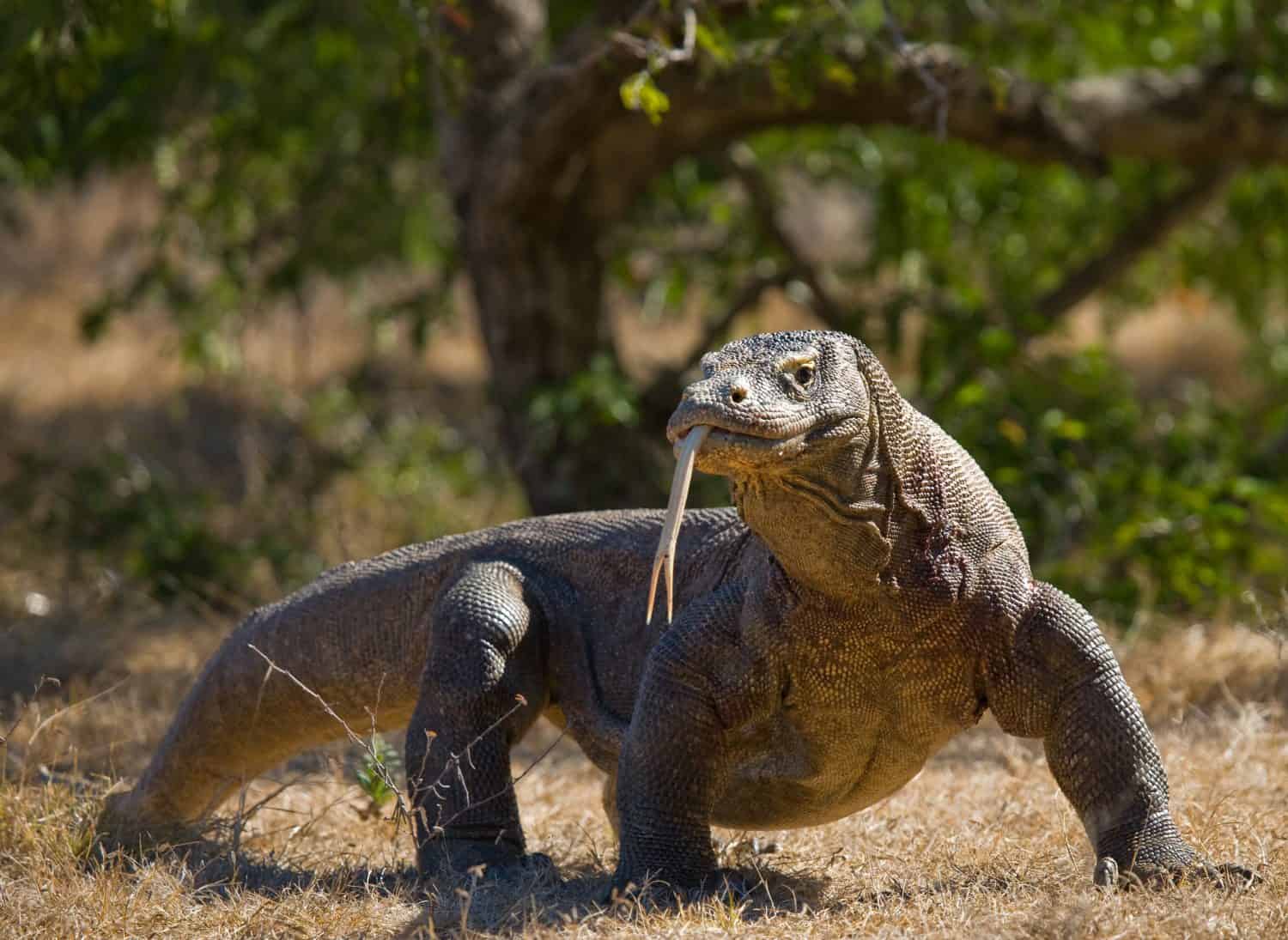
Komodo Dragons are an example of Island Gigantism.
©GUDKOV ANDREY/Shutterstock.com
The insects are frequently cited as examples of Island Gigantism. This is a strange element of evolutionary biology that observes the fact that there are many animals that grow outside of their normal species proportions when isolated on islands. The reason for this phenomenon isn’t entirely clear. There are many examples of island gigantism, one of the most famous being the fearsome Komodo Dragon.
5. They Live Long Lives for Insects
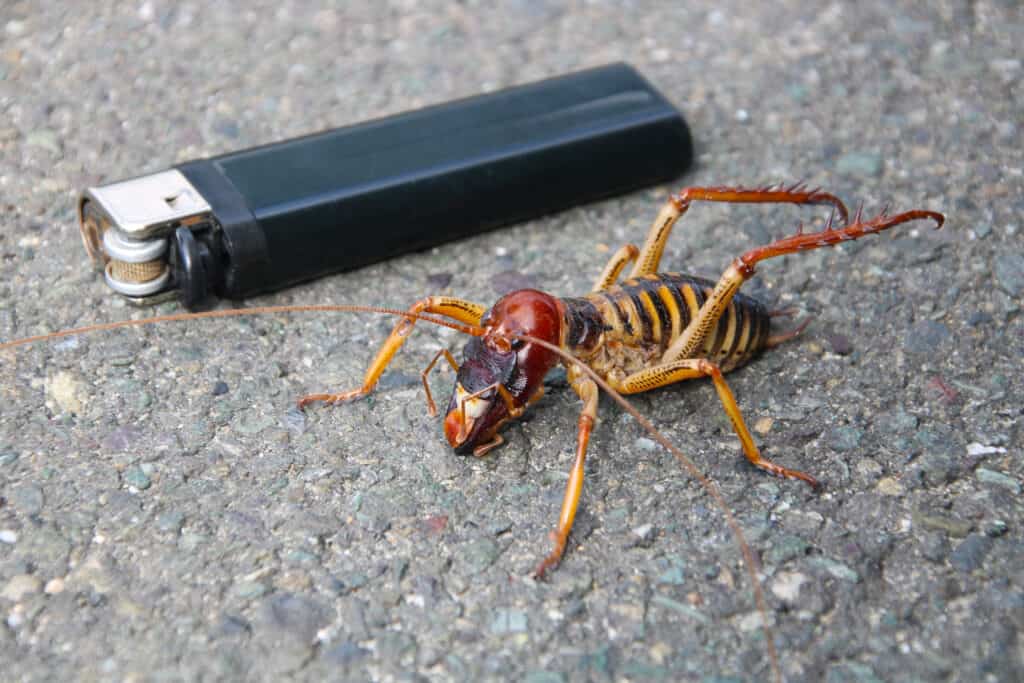
Weta have a tendency to live very long lives for insects.
©rybarmarekk/Shutterstock.com
Weta can live to be up to 6 or 7 years old, with many adults averaging about four years in lifespan. This is quite long-lived for insects, many of which have lifespans of weeks, days, or even hours. Why Weta live for so long isn’t exactly clear.
6. They Are Omnivorous
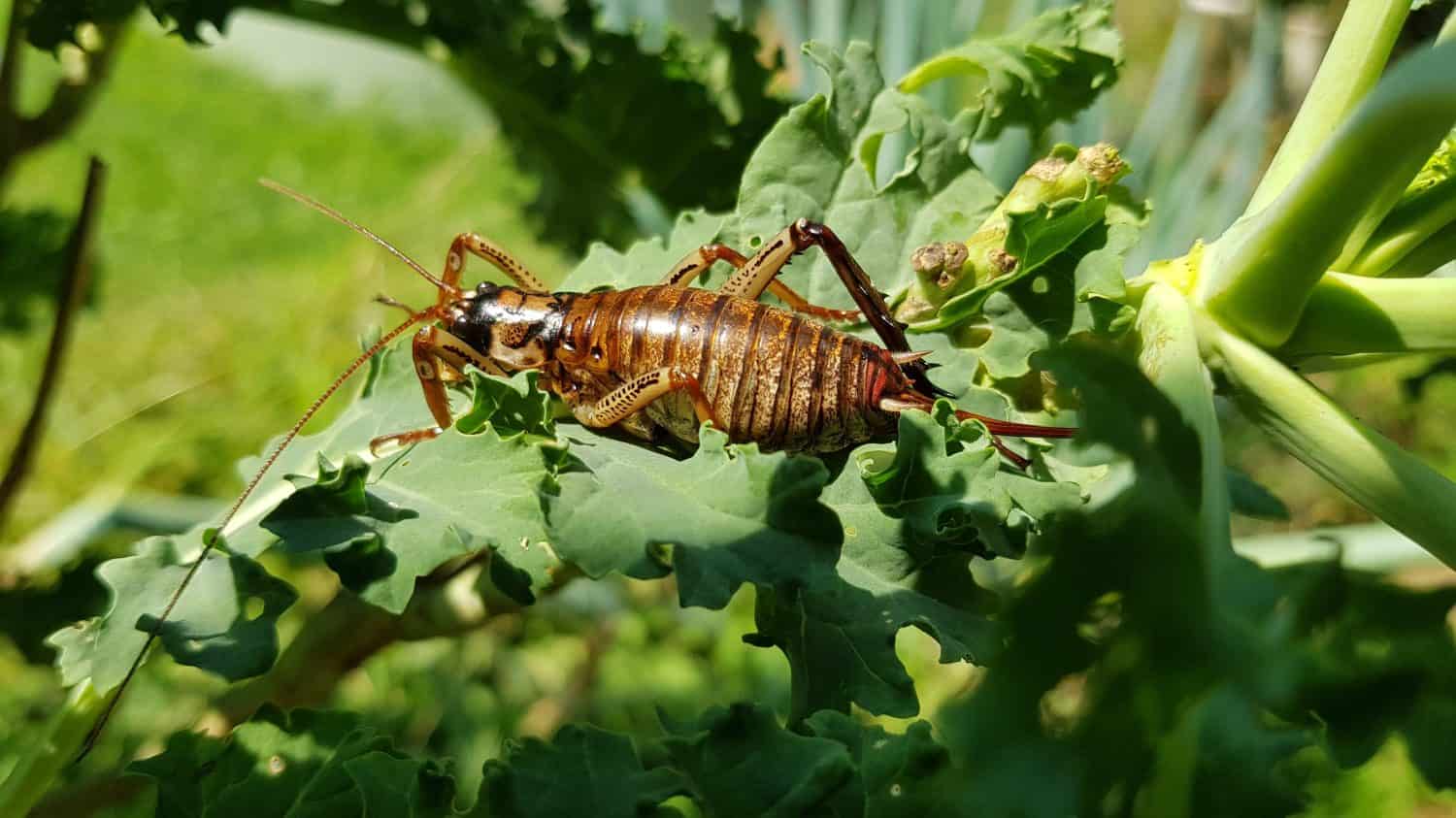
A Weta munching on some garden kale.
©Ryan Ranby/Shutterstock.com
Weta need a balanced diet of fruits, vegetables, and protein to lead a healthy lifestyle – just like you! Actually, the diet of a Weta is quite varied between different subspecies. The Giant Weta is surprisingly primarily vegetarian, subsisting on a diet of leaves, berries, and lichens.
Other Weta are active predators who seek out and prey on other insects. Some have very powerful jaws that can inflict painful bites. However, despite the pain, these bites are not particularly dangerous to humans.
7. They Are Polygynous
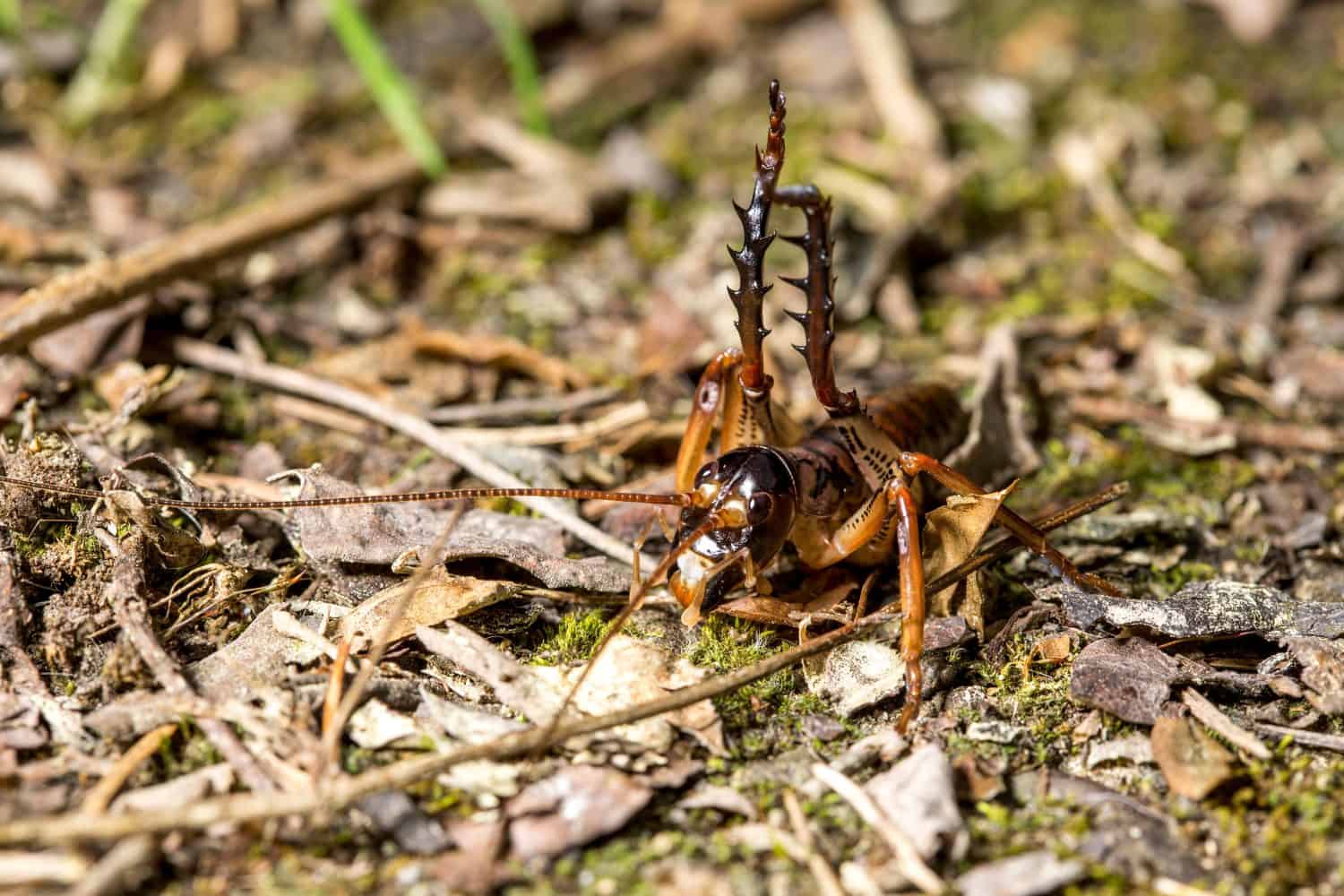
A Weta with its legs in defense mode.
©Chris Moody/Shutterstock.com
Wetas are also distinct for their strange mating patterns in the insect world. These bugs tend to match multiple females to one male, with males engaging in competition to attract multiple mates. This is quite common in mammalian animals such as lions and gorillas, but much more rare for insects.
Some of these insects also engage in the peculiar behavior of presenting gifts to plausible mates. This is another type of behavior that is more commonly seen in birds and mammals than in insects.
8. They’ve Made Their Name on The Silver Screen

Weta Studios is responsible for many of the effects in The Lord of The Rings Trilogy.
©Sophie Burgess/Shutterstock.com
Well, not exactly. However, they have lent their name to Weta Studios, a world-class special effects house based in the New Zealand capital of Wellington. Founded by the maestro Peter Jackson in order to do the special effects for his Lord of The Rings Trilogy, Weta has gone on to produce effects for many notable films and video games.
Some of the films that this studio has produced effects for include Avatar, The Avengers franchise, and the Alien franchise.
Thank you for reading! Have some feedback for us? Contact the AZ Animals editorial team.

